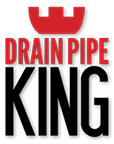Sewerage pipes
Sewerage pipes carry waste water from your house into the Council sewerage main or your septic system.
Symptoms of sewerage pipe blockages
If there is a blockage in the sewerage line, it is not only offensive to the senses but unhygienic too. There are certain safety aspects to consider with sewage overflows caused by a blockage and acting fast is crucial. Always call a professional if you suspect there is a blockage, particularly in the case of sewerage pipes, as these can harbour dangerous fumes and gases. There are many symptoms of a blocked sewerage pipe including:
- Toilet gurgling
- Floor waste grate overflows (laundry or bathroom drains)
- Kitchen sink draining slowly
- Bathroom sink or bath tub draining slowly
- Smelly drains
- ORG (Overflow Relief Gully) overflow
How a plumber will clear a sewerage pipe blockage
In order to clear the blockage effectively your plumber should insert a camera down the line. This way, the blockage can be physically seen and enables them to determine the location and cause of the blockage. A high pressure water jetter should then be used to clear the obstruction. This tool is powerful enough to cut through anything from grease balls to tree roots, clearing the blockage entirely.
Once cleared, the camera should be sent back into the pipe work to ensure your pipes are completely clear and trouble free. Your plumber may also make recommendations on how to prevent this happening again. The pipe may need to be relined if tree roots or a broken pipe are the cause of the blockage. No dig pipe relining is a quick and non-invasive process.
Prevention tips to avoid blocked drains
- Only flush toilet paper down the toilet – no nappies, tampons, pads, wet wipes, food scraps, kitchen paper or tissues etc.
- Wipe out pans prior to washing them so the grease does not go into the sewer pipe. It will pool and stick to the edge. This will gradually build up and block the pipe
- Do not put food scraps into the sewer via the kitchen sink
- Minimise the amount of hair that goes down the drain – drain screens are handy in assisting with this
- Put a sink load of hot water down the kitchen sink to flush the pipes out every week or so
